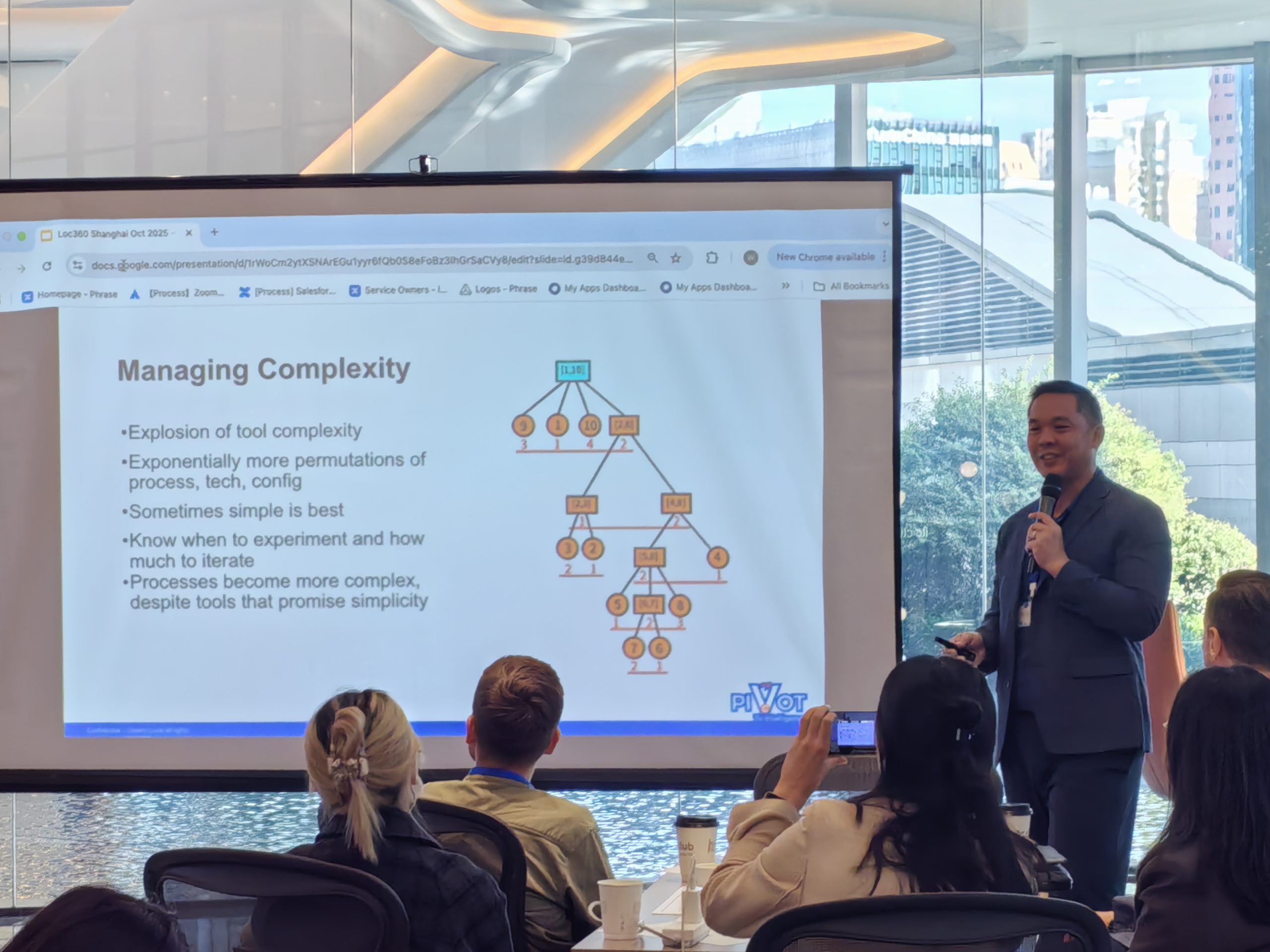On October 28th, Clearly Local partnered with Phrase to bring together China’s localization community for an afternoon of insights, innovation, and collaboration. Held in Shanghai, Loc360° attracted localization leaders from some of the world’s most innovative companies—from gaming giants like Lilith Games to industrial leaders like Rockwell Automation and Stanley Black & Decker, plus tech innovators including AWS and Alibaba.com.
The theme? “How AI-Driven Localization Can Help Enterprises Overcome the Challenges of Multi-Lingual UI/UX.”
And based on the energy in the room and the depth of conversations that followed, it’s clear this topic couldn’t be more timely.
The Big Picture: From Execution to Strategy
The event kicked off with keynote presentations from Semih Altinay, VP of AI Solutions at Phrase, and Philippe Cao, Managing Director of Clearly Local . Both speakers painted a vision of localization’s evolution, from tactical execution to strategic business driver.
Agentic AI: Beyond Automation to Autonomy
Semih introduced the concept of Phrase Agentic Content System (PACS), marking a fundamental shift in how we think about AI in localization. As he explained, today’s AI is mostly “prompt in, answer out.” But agentic AI systems can perceive their environment, decide what to do based on goals, act autonomously, and learn from feedback.
The distinction he drew was particularly powerful: “Automation moves tasks. PACS moves outcomes.”
Instead of simply translating content, agentic systems can analyze it, adapt it for specific goals, check quality, improve it iteratively, and prepare it for publishing, all while adhering to brand guidelines, glossaries, and quality gates. Think of it as an expert team that decides, adjusts, and delivers the outcome.
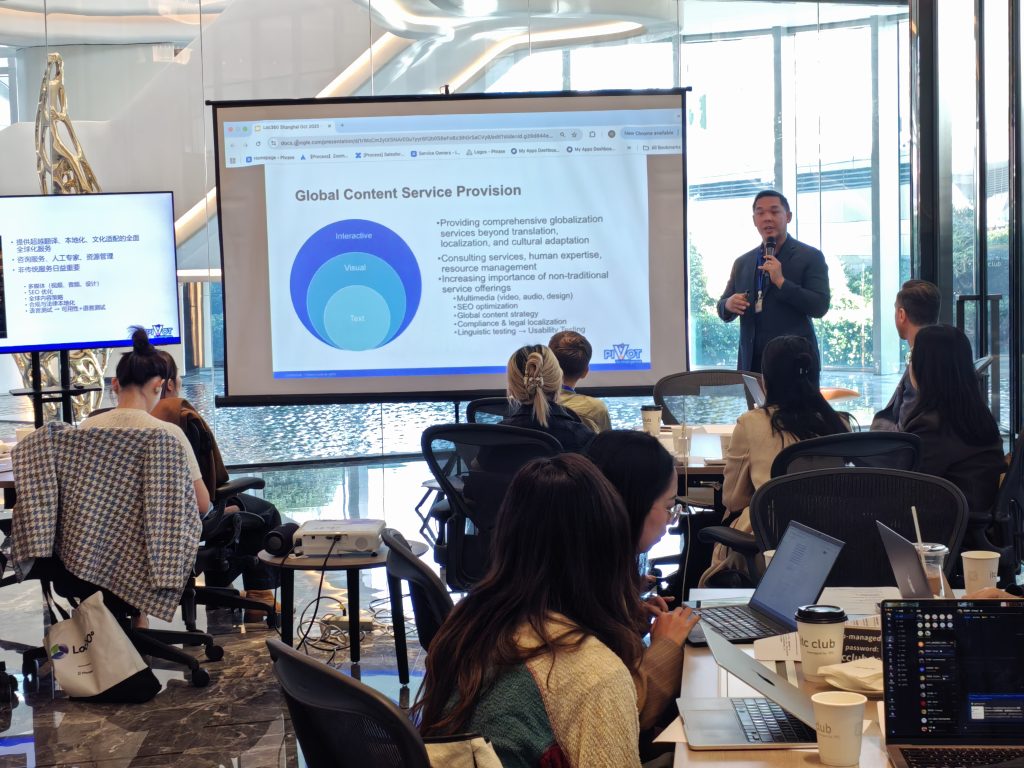
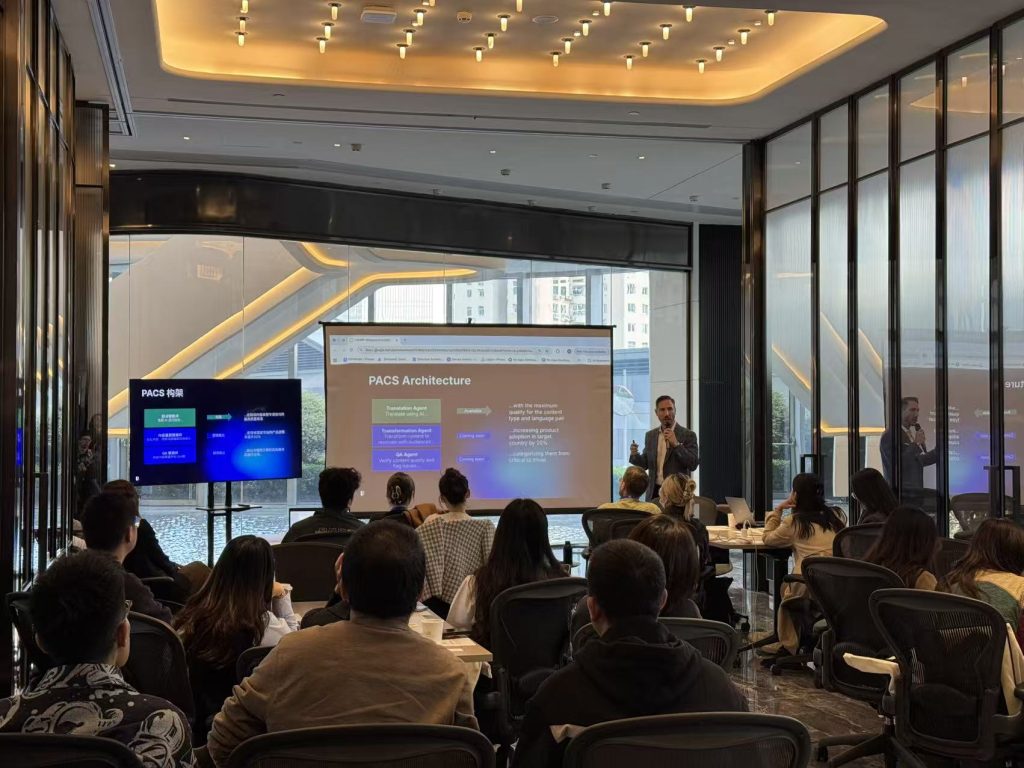
Clearly Local’s Evolution: From LSP to Language Solutions Integrator
Philippe’s presentation outlined Clearly Local’s strategic pivot from traditional localization provider to what industry consulting firm Slator calls a Language Solutions Integrator (LSI).
This transformation reflects broader industry shifts:
- Project managers are becoming solution architects, integrating client workflows, vendor technologies, and custom “glue code”
- Linguists are evolving into “language technologists” and prompt engineers
- Services are expanding beyond text to multimedia localization, SEO optimization, global content strategy, and compliance
Philippe also emphasized a critical principle that resonated with many attendees: sometimes simple is best. In an era of exploding complexity, knowing when NOT to add technology is just as important as knowing when to implement it. The goal is efficiency, not techification for its own sake.
One particularly compelling point: Clearly Local’s work often involves building language resources from the ground up for less-common languages like Igbo, Kamba, and Irish—markets where established terminology and language norms may not even exist yet.
Data as a Decision Engine
Phrase APAC Account Executive Yiwen Chen’s presentation on data-driven localization demonstrated how metrics transform localization from a cost center into a strategic growth engine.
The shift? From reactive to proactive.
Without data, teams operate on assumptions: “We think the vendor is slow.” “Maybe our MT isn’t good enough.” “We hope quality is fine.”
With data, you prove, predict, and prioritize:
- “Vendor A’s quality dropped 15% this quarter—time to retrain or reallocate.”
- “Our Korean pipeline delivers 25% faster than Japanese—we’ll use that model for next title.”
- “Switching localization workflows cuts cost per word, saving $100K annually.”
Yiwen shared practical examples of how integrated dashboards can track SLA compliance, identify translator over-editing or under-editing patterns, and even connect localization quality metrics to business outcomes like customer retention rates—which one client improved by 30% through optimized content strategies.
The Three Pillars of UI/UX Localization
Jill Huang, Clearly Local’s Customer Success Director, and Joyce Chen, Clearly Local’s Project Management Coordinator, gave the audience an in-depth look at practical UI/UX localization challenges. They outlined three essential pillars for successful UI localization:
- Situational Context – preparation and project kickoff
- Communication Context – during project execution
- Visual Context – during and after the project, including linguistic testing
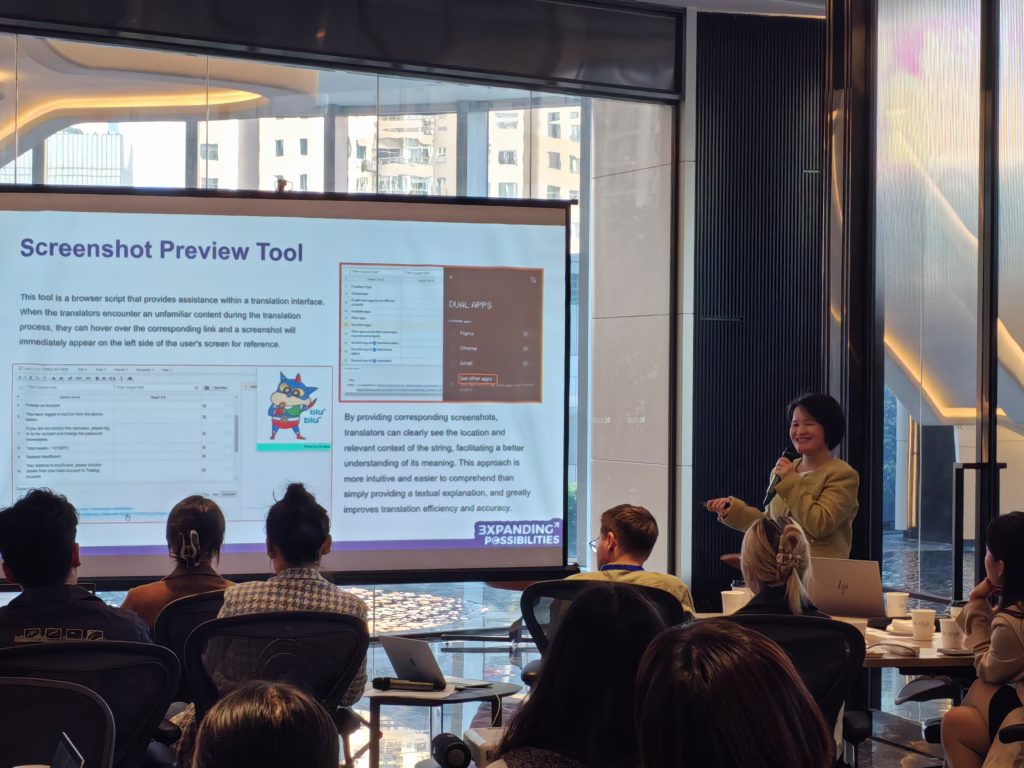
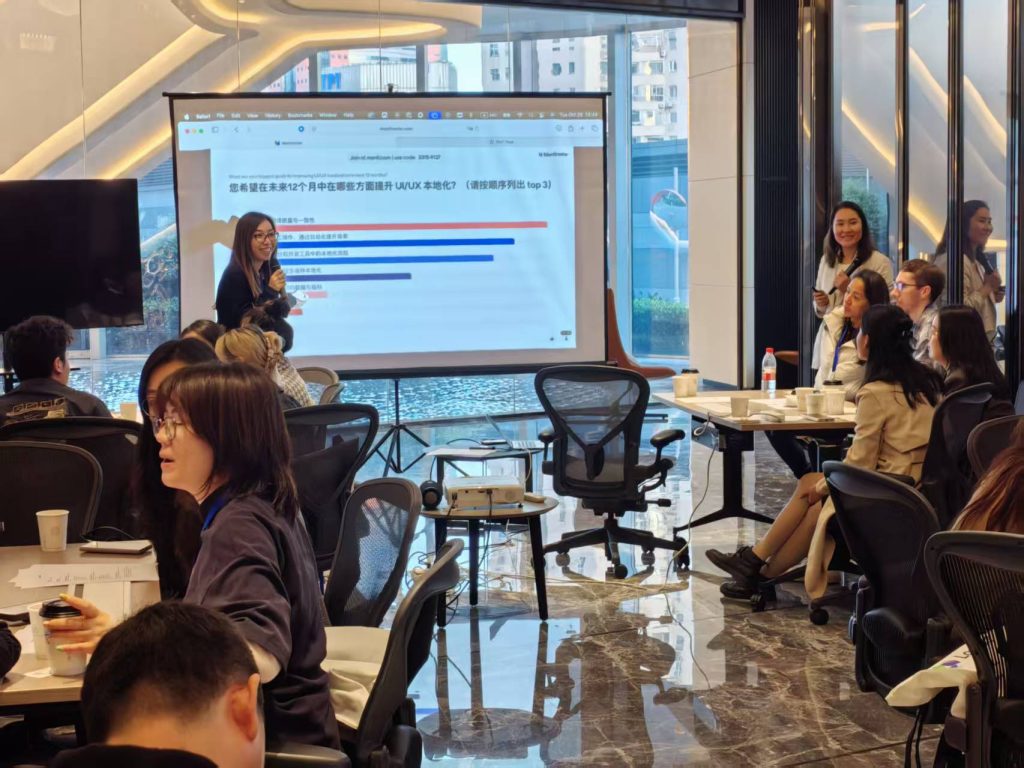
A highlight was the demonstration of easyLT, Clearly Local’s proprietary tool developed for clients who cannot use cloud-based solutions. The tool has generated significant interest from companies seeking offline linguistic testing capabilities.
Jill also shared case studies including:
- Optimized AI translation prompts for KuCoin web content
- AI data training using human-written content for Toloka
- Translation evaluations for realme’s AI mobile replies
- The expansion into user testing as an extension of linguistic testing services
The In-context preview feature also drew considerable attention, offering real-time preview capabilities that allow linguists to translate in context and preview designs in many languages, file types, and CMS before delivery.
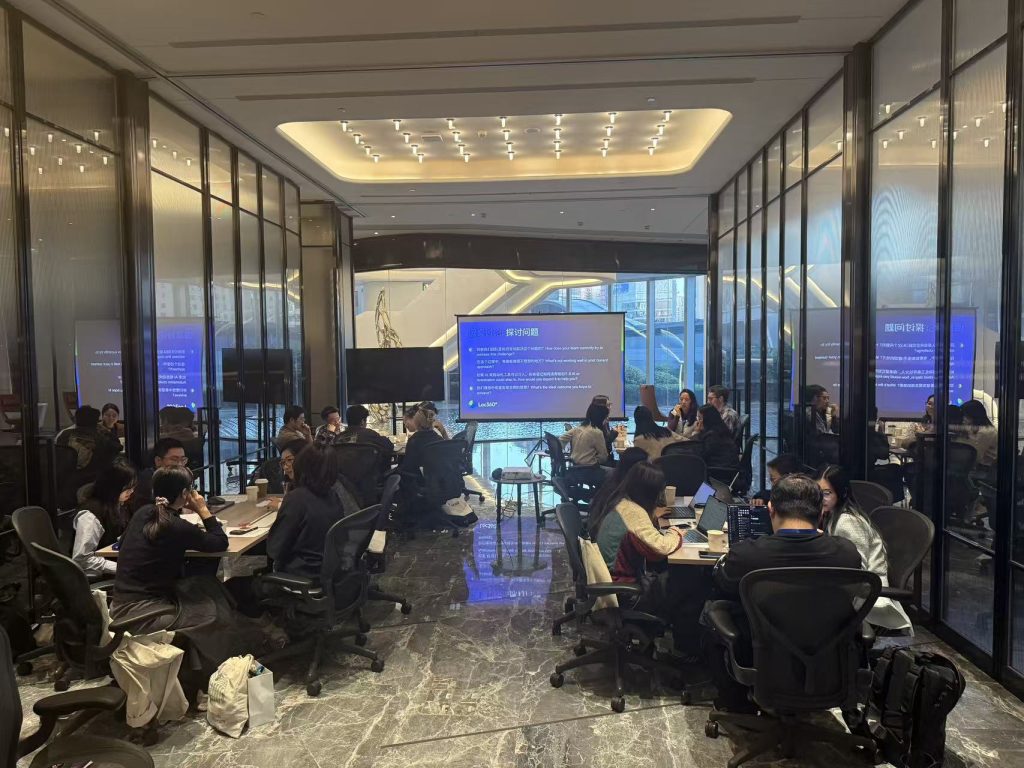
What the Industry Is Asking For
Throughout the afternoon’s roundtable discussions and interactive polls, clear priorities emerged:
Biggest goal for the next 12 months? Improving translation quality and consistency (overwhelming winner)
Where’s the most friction? Lack of interface context during translation
Top AI challenges? Quality consistency
If you could fix one thing instantly? The answers ranged from balancing quality and cost, to improving AI in-context translation, to raising organizational awareness about localization’s ROI, to enabling translators to preview final output while working.
These insights reveal an industry at an inflection point, eager to adopt AI but equally concerned about maintaining the quality and contextual accuracy that makes localization effective.
Looking Ahead
The success of Loc360° Shanghai underscores what we at Clearly Local have long believed: localization is no longer just about converting words from one language to another. It’s about enabling businesses to operate authentically in every market they serve, with the right content, in the right context, delivered efficiently at scale.
As Philippe noted in his presentation, the question isn’t whether to use AI, but which tools provide the best value, when they should be used, and equally important—when they shouldn’t be used.
The next era of localization will be defined by:
- Intelligent systems that adapt to goals, not just execute tasks
- Data-driven decisions that prove ROI and guide strategy
- Human expertise that ensures quality, cultural relevance, and brand consistency
- Integrated solutions that connect localization to broader business outcomes
We’re grateful to everyone who joined us, to our partners at Phrase, and to all the speakers who shared their insights. The conversations that happened in the room—and will continue in the weeks ahead—are building the foundation for how global companies will communicate with their customers in the years to come.
Interested in learning more about AI-driven localization or how Clearly Local can support your global content strategy? Contact us to continue the conversation.
Want to join us at the next Loc360° event? Stay tuned to our LinkedIn and website for announcements.

